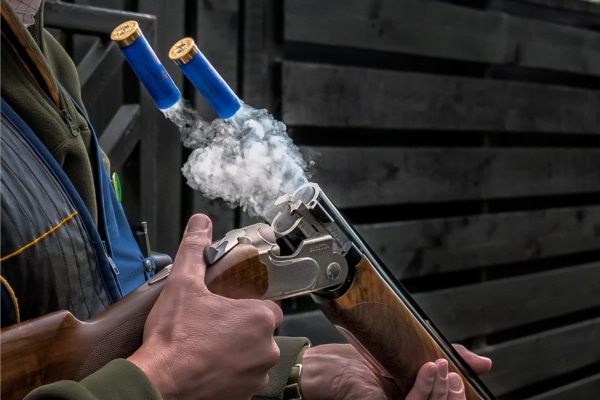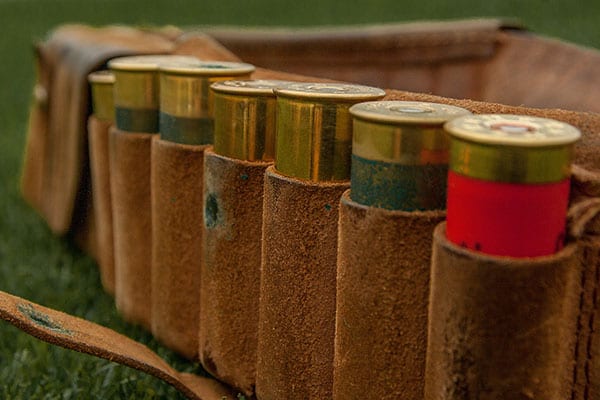
HSE requests extension to timeline on lead ammunition restrictions
The Health and Safety Executive has requested an extension to the timeline for the final stage of its lead ammunition review in England, Wales and Scotland.
Get information on the legal shooting season for mammals and birds in the UK.
Apply for funding for your project or make a donation today
Comprehensive information and advice from our specialist firearms team.
Everything you need to know about shotgun, rifle and airgun ammunition.
Find our up-to-date information, advice and links to government resources.
Everything you need to know on firearms law and licensing.
All the latest news and advice on general licences and how they affect you.


When I was first employed by BASC back in 1984, my first job as International Affairs Officer was to produce a paper on the European Hunters’ Contribution to Lead Shot Poisoning of Waterfowl. My work was funded by a number of European hunter organisations.
The paper that I produced showed that there was a progressive level of poisoning – grazing waterfowl like geese and wigeon had the lowest levels, dabbling duck like mallard were around four per cent and diving duck had the highest levels of lead ingestion – around eight or nine per cent.
I argued that this was less than levels found in north America and that large-scale die-offs were unusual in Europe. There was no need, at that time, to change to non-lead alternatives.
American scientists contested this. However, I recognised that the evidence of avoidable waterfowl losses was conclusive and that the future of lead shot, over wetlands in particular, was limited.
BASC arranged a number of events that involved the use of steel shot to demonstrate the relative safety and effectiveness of non-lead alternatives. At that time, we did not have a range of shotguns available for demonstration, so I got my (then) only shotgun modified to shoot with steel.
It was an AYA Yeoman side-by-side 12 bore and I got a local gunsmith to reduce the choke in both barrels to ¼. From 1985 onwards that gun, a model familiar to many BASC members, shot a lot of the earlier (primitive) steel loads. It is still in my cabinet and just as it was when I bought it 35 years ago in Newton Stewart for £50. Probably still only worth £50 but that is another story.

I remained involved in the lead shot debate at an international level and in or around 1989 attended a key conference in Brussel on lead ammunition. Again, my presentation was in defence of the continued use of lead.
I can assure you that I was not a popular speaker at that event and everything possible was done by the organisers to derail me, including cutting my presentation from 20 minutes to 10.
Within BASC I was not the only one defending lead – Dr John Harradine’s work over decades should be applauded by the shooting community. Without his contribution, on behalf of BASC, we would now have been paralleling Denmark and probably recognising 25 years of being lead free.
Moving on, I came back to Scotland and have been BASC’s Scottish director for 25 years. Over this period I helped guide Scottish Government when they introduced their own legislation to restrict the use of lead shot on or over wetlands in 2004.
I helped ensure that this did not affect moorland (thereby exempting grouse shooting) and also facilitated the ability to shoot ducks and geese with lead over stubble fields and when shooting away from wetland features.
All of this ensured that lead shot did not fall into wetlands, where waterfowl could pick it up, but allowed lead to be used everywhere else. Wildfowlers accepted this change on the foreshore (wetland), but many other inland shooters probably did not. It did not prevent continued wider environmental contamination with lead shot.

After 36 years I am still surprised that we are continuing to shoot with lead shot. BASC has successfully supported the continued use of lead for decades and without this advocacy I am sure that we would have been lead-free years ago.
There is little recognition or thanks for what we have done in the past; for wildfowlers, inland duck shooters, pigeon shooters, game shooters, or even a realisation that we are currently in a really strong position.
We now have sustainable alternatives to lead shot and we have five years to make the transition, hopefully.
If we do not embrace this now, we will all be exposed to possibly restrictive legislation within a much shorter timescale.
The evidence requiring change has been there for many years.
For those who say that alternatives to lead do not work, I would say that on my little flight pond at home, a modest little splash that attracts at most 50 mallard, me, my neighbours and friends have shot steel for 15 years and nobody has complained and no guns have been damaged. I supply all the cartridges and all over-and-unders and side-by-sides have coped more than adequately.
For those who claim that steel has no penetrative ability, I would just say that I have been involved in a number of simple demonstrations comparing lead to steel. The latest was last Tuesday in Caithness at an event hosted by SNH for farmers keen to control migratory geese under licence. Both lead and tungsten performed poorly in penetration compared to steel when shooting at (old) boxed copies of Sporting Gun. We have done the same at events on Islay and Orkney.
For those who say that lead has never poisoned a duck or goose, I would just say that our wildfowling officers were on holiday on the Tay Estuary in January and saw some greylag geese behaving abnormally. They shot one and their dogs retrieved two. They dropped them in at WWT Slimbridge and the analysis showed that their symptoms were consistent with lead poisoning. Blood and tissue analyse also confirmed this. They had ingested lead pellets and were destined to die on the Tay. BirdLife International claim that one million waterfowl die each year in Europe from lead shot poisoning. I would challenge that, but if you scale up three geese on the Tay it may be difficult to contest.

The Health and Safety Executive has requested an extension to the timeline for the final stage of its lead ammunition review in England, Wales and Scotland.

Read the joint statement issued in response to the NGDA’s announcement regarding lead-free supply chains from 1 July 2022.

Read our full response to the announcement of a two-year UK REACH review of the use of lead ammunition.
Sign up to our weekly newsletter and get all the latest updates straight to your inbox.
© 2025 British Association for Shooting and Conservation. Registered Office: Marford Mill, Rossett, Wrexham, LL12 0HL – Registered Society No: 28488R. BASC is a trading name of the British Association for Shooting and Conservation Limited which is authorised and regulated by the Financial Conduct Authority (FCA) under firm reference number 311937.
BASC Direct Ltd is an Introducer Appointed Representative of Agria Pet Insurance Ltd who administer the insurance and is authorised and regulated by the Financial Conduct Authority, Financial Services Register Number 496160. Agria Pet Insurance is registered and incorporated in England and Wales with registered number 04258783. Registered office: First Floor, Blue Leanie, Walton Street, Aylesbury, Buckinghamshire, HP21 7QW. Agria insurance policies are underwritten by Agria Försäkring.
If you have any questions or complaints about your BASC membership insurance cover, please email us. More information about resolving complaints can be found on the FCA website or on the EU ODR platform.
Notifications